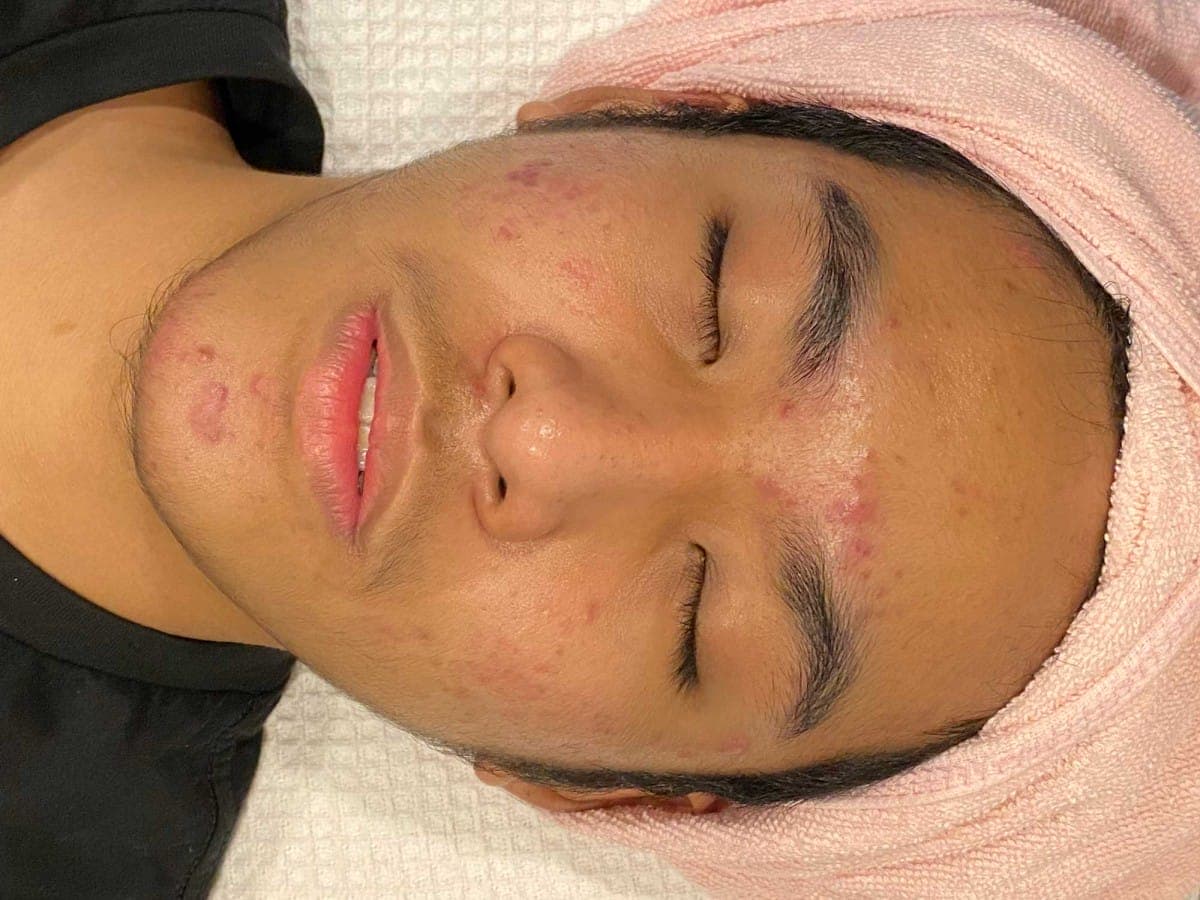Skincare
How to Identify and Treat Different Types of Acne
If you click on links we provide, we may receive compensation.
Acne isn’t just about the occasional pimple. It comes in multiple forms, each requiring a different approach to treatment. Some people battle persistent blackheads, while others deal with deep, painful cysts that take weeks to heal. Knowing what kind of acne, you have is the first step toward clearer skin. Without the right treatment, breakouts can worsen, leaving behind scars and stubborn pigmentation.
Let’s break down the different types of acne, their causes, and the most effective ways to treat them.
Understanding the Causes of Acne
Before diving into specific types, it’s important to understand why acne occurs. The main factors behind breakouts include excess oil production, clogged pores, bacteria, and inflammation. Hormones, diet, stress, and genetics also play significant roles.
Sebaceous glands produce oil (sebum) to keep skin hydrated. But when these glands become overactive, the excess oil mixes with dead skin cells and bacteria, leading to breakouts. The severity of acne depends on how deep the clog goes and how the body responds to the inflammation. Additionally, environmental factors like pollution and humidity can exacerbate acne by increasing oil buildup and bacterial growth. Using heavy or greasy skincare products can further contribute to clogged pores.

Identifying Different Types of Acne
Comedonal Acne (Blackheads and Whiteheads)
This mild form of acne occurs when pores become clogged with oil and dead skin cells but remain relatively non-inflammatory.
- Blackheads (Open Comedones): These appear as small, dark spots on the skin. The dark color isn’t dirt, but rather oxidized oil exposed to air.
- Whiteheads (Closed Comedones): These are similar to blackheads but remain covered by a thin layer of skin, giving them a white or flesh-colored appearance.
How to Treat Blackheads and Whiteheads
- Use salicylic acid to exfoliate and clear clogged pores.
- Retinoids help speed up cell turnover and prevent blockages.
- Keep your skin hydrated to avoid overproduction of oil.
- Avoid picking or squeezing, as this can cause inflammation and scarring.
- Regular exfoliation with a gentle chemical exfoliant can prevent buildup.
- Incorporating clay masks into your routine can help absorb excess oil.
Papules and Pustules (Inflammatory Acne)
When clogged pores become inflamed, they turn into red, swollen bumps known as papules. If pus accumulates, they develop into pustules—what most people think of as pimples.
How to Treat Papules and Pustules
- Benzoyl peroxide kills acne-causing bacteria and reduces inflammation.
- Niacinamide is a great ingredient for calming redness and irritation.
- Avoid scrubbing too hard, as friction can worsen inflammation.
- Stick to non-comedogenic skincare and makeup products to prevent further clogging.
- Tea tree oil has natural antibacterial properties that can help with inflammation.
- Applying cold compresses can soothe irritation and reduce swelling.
Nodules and Cysts (Severe Acne)
This is the most severe type of acne, forming deep under the skin and often causing pain.
- Nodules are large, firm lumps beneath the skin’s surface.
- Cysts are even deeper, filled with pus, and more likely to leave scars.
How to Treat Nodular and Cystic Acne
- Over-the-counter treatments usually aren’t enough—prescription medication is often required.
- Oral antibiotics can reduce bacterial growth and inflammation.
- Isotretinoin (Accutane) is a powerful option for severe cases but comes with potential side effects.
- Cortisone injections from a dermatologist can shrink large cysts within days.
- Hormonal therapy, such as birth control pills or spironolactone, can help regulate breakouts caused by hormonal imbalances.
- Blue light therapy may help reduce acne-causing bacteria.
Lifestyle and Skincare Adjustments
Regardless of the type of acne, small changes in daily habits can make a big difference.
- Cleanse gently but effectively: Wash your face twice a day with a mild cleanser.
- Use a dedicated acne treatment: Ingredients like benzoyl peroxide, salicylic acid, or retinoids work best when used consistently.
- Moisturize—even if you have oily skin: Dehydration can trigger more oil production.
- Protect your skin from the sun: Many acne treatments make skin sensitive to UV rays, so sunscreen is essential.
- Watch your diet: Dairy and high-glycemic foods may trigger breakouts in some people.
- Keep hands off your face: Touching your skin transfers bacteria and oil.
- Change pillowcases frequently to prevent bacteria buildup from affecting your skin.
- Exercise regularly to help regulate hormones and improve circulation.
When to See a Dermatologist
If your acne is persistent, painful, or leaving scars, it’s time to see a professional. A dermatologist can prescribe stronger treatments tailored to your skin’s needs. Some cases of acne are linked to underlying health issues, like hormonal imbalances, which require medical intervention. In cases of extreme scarring, dermatologists may recommend treatments such as laser therapy, chemical peels, or microneedling.
FAQs
Can stress cause acne?
Yes. Stress triggers the release of cortisol, which can increase oil production and lead to breakouts. Managing stress through exercise, meditation, and good sleep hygiene can help.
Do acne scars ever go away?
Some fade over time, but deep scars may need treatments like laser therapy, microneedling, or chemical peels. Using vitamin C serums can also help lighten post-inflammatory hyperpigmentation.
Does makeup make acne worse?
It depends on the products. Non-comedogenic and oil-free formulas are best for acne-prone skin. Removing makeup thoroughly every night is essential to prevent clogged pores.
Can drinking water clear acne?
Hydration supports overall skin health, but it won’t directly cure acne. Consistent skincare and diet changes are more effective.
Is toothpaste a good spot treatment?
No. Toothpaste contains ingredients that can dry out skin but may also cause irritation. Use a proper acne treatment instead.
Identifying the right type of acne is key to choosing the most effective treatment. With the right skincare routine, lifestyle changes, and professional guidance when necessary, achieving clearer skin is possible. Staying consistent with treatments and monitoring how your skin reacts will help in developing the best strategy for long-term acne control.




